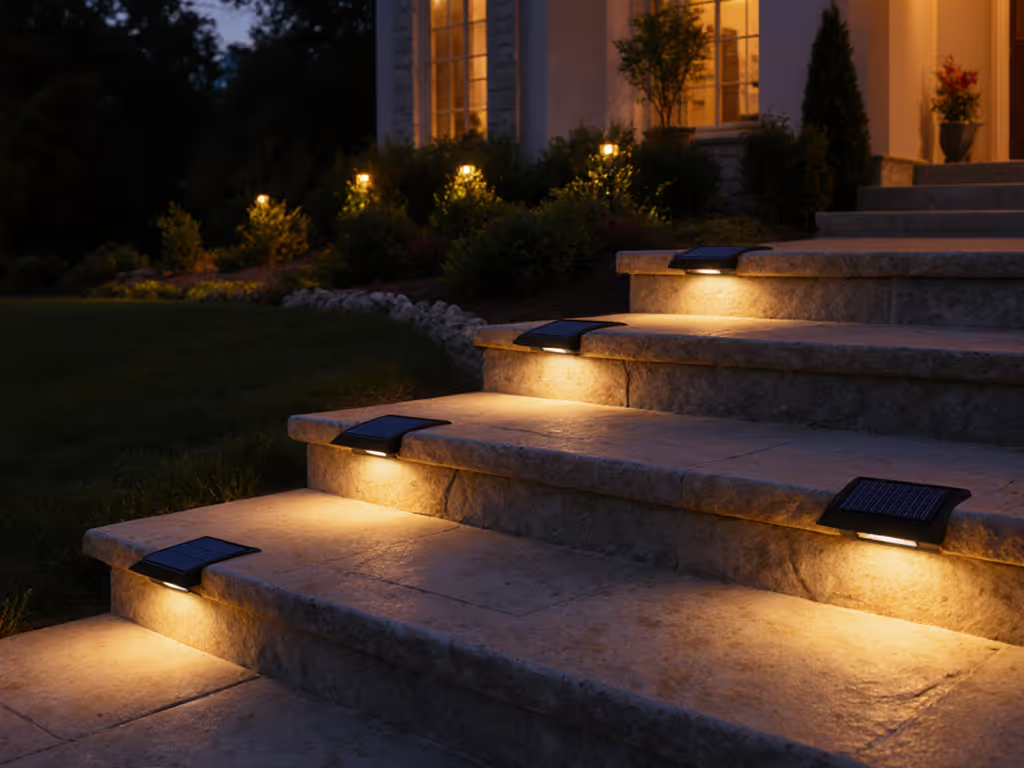
Yard Size Solar Lighting Guide: Urban Garden to Rural Property
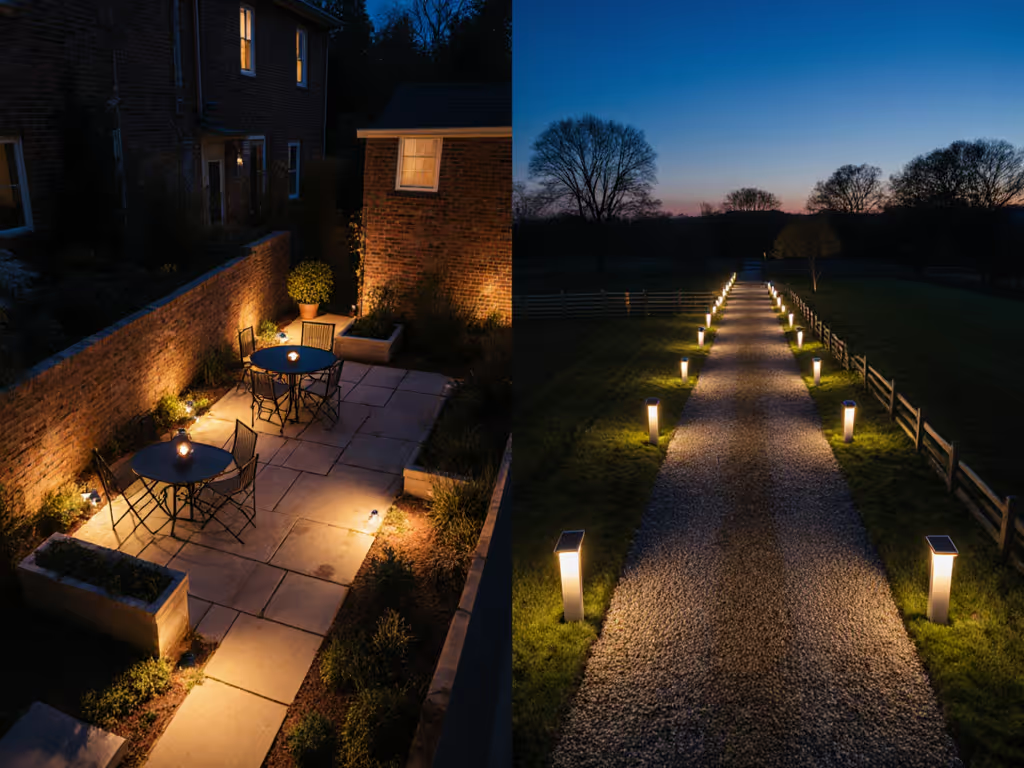
Choosing appropriate solar lights for yard spaces requires thoughtful consideration of both property dimensions and ecological impact. Understanding how to match property size lighting solutions to your specific context ensures both functionality and environmental responsibility. In this comprehensive guide, we'll address the critical considerations for selecting solar lighting scaled appropriately to your outdoor space, whether you're illuminating a compact urban courtyard or a sprawling rural estate.
As someone who has spent years translating light spectrum research into practical garden applications, I've observed how inappropriate lighting can disrupt nocturnal ecosystems while failing to meet homeowner needs. Warm, shielded, and timed: light that wildlife can live with. This principle guides my recommendations throughout this analysis.
What Determines Appropriate Solar Lighting Coverage for Different Property Sizes?
The relationship between lumens and actual coverage area is often misunderstood in solar lighting. While lumens measure total visible light output, effective illumination depends on multiple variables:
- Fixture design and beam angle: A narrow spotlight creates intense focused light over a small area, while a 360° fixture provides broader but less intense coverage
- Mounting height: Higher installations cover more square footage but reduce ground-level lux (illuminance)
- Surface reflectivity: Light-colored surfaces reflect more light than dark mulch or soil
- Environmental factors: Tree canopy cover, building shadows, and local weather conditions
Research indicates that for pathway lighting in residential settings, 10-20 lumens per linear foot provides adequate illumination for safe navigation without excessive brightness. For larger open areas, the Illuminating Engineering Society recommends 0.5-1.0 foot-candle (5-10 lux) for general safety, though many homeowners prefer slightly higher values for aesthetic reasons. For a deeper dive into lumens, color temperature, beam angle, and IP ratings, see our Lumens vs Watts guide.
I recall documenting bat activity near a community garden where two path lights stood just feet apart, one cool-white and unshielded, the other warm and properly shielded. The difference was immediate: the shielded fixture attracted far fewer insects while providing adequate illumination for human navigation. This observation reinforces why spectrum, shielding, and timing must guide our decisions.
How Do Urban Gardens Differ from Rural Properties in Lighting Needs?
Urban and rural properties present distinct lighting challenges that require tailored solutions:
Urban Garden Lighting Considerations:
- Limited space requires precise fixture placement to avoid light trespass into neighboring properties
- Higher ambient light pollution means less total illumination is needed
- Privacy concerns often necessitate downward-focused illumination
- Space constraints favor compact, multi-functional fixtures
- Typical urban garden path lighting: 50-150 lumens per fixture, spaced 8-10 feet apart
Rural Property Lighting Considerations:
- Greater distances between structures require more strategic placement
- Lower ambient light means more total illumination is needed for safety
- Wildlife considerations become more pronounced with natural habitats nearby
- Larger open areas benefit from zone lighting planning
- Typical rural driveway lighting: 300-500 lumens per fixture, spaced 15-20 feet apart
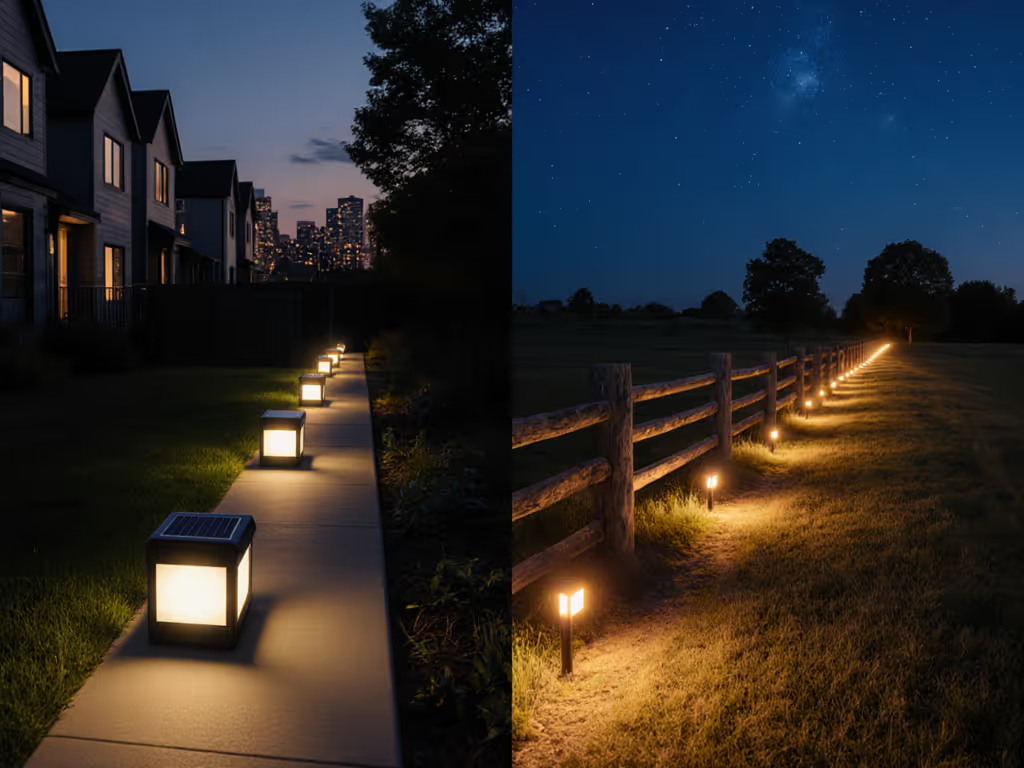
How Does Shade Affect Solar Lighting Performance?
Tree cover significantly impacts solar lighting reliability, a critical consideration across property types. Studies show that even 20% shade can reduce solar panel efficiency by 40-50%, with performance dropping exponentially as shade increases.
For properties with significant tree coverage, look for these features:
- Higher-efficiency monocrystalline panels (18-22% efficiency) versus cheaper polycrystalline
- Remote solar panels that can be positioned in unshaded areas
- Larger panel-to-battery ratios (minimum 1.5W panel per 1000mAh battery)
- MPPT charge controllers that optimize power extraction in partial shade
The Peasur Solar Ground Lights, with their 1.55W monocrystalline panels, demonstrate improved partial-shade performance compared to basic models. These lights maintain functionality even with limited daily sun exposure, a critical factor for northern-facing garden beds or areas beneath deciduous trees.
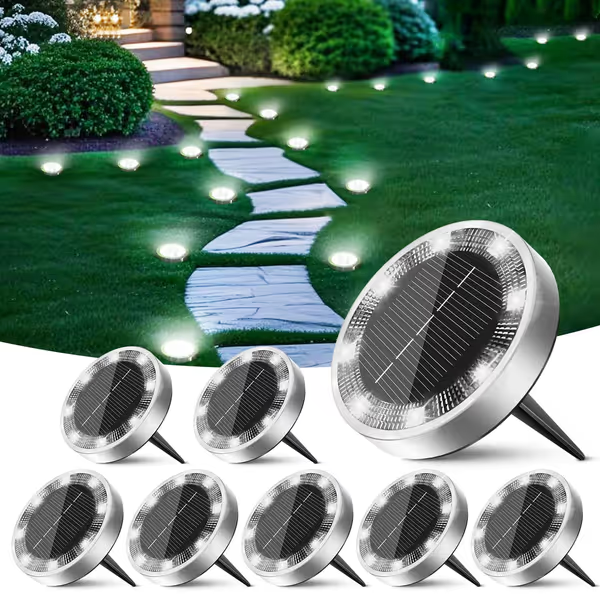
Peasur Solar Ground Lights Outdoor, 8 Pack
What Are Dark-Sky Principles and Why Do They Matter for Yard Lighting?
Dark-sky principles focus on minimizing unnecessary light pollution through three key practices: using warm color temperatures (under 3000K), fully shielding fixtures to direct light downward, and limiting illumination to necessary durations.
These principles matter because:
- 40% of insect species are declining globally, with artificial light at night identified as a contributing factor
- Nocturnal wildlife navigation is disrupted by blue-rich lighting
- Human circadian rhythms are affected by exposure to cool-white light at night
- Skyglow obscures stars, diminishing the night sky experience for everyone
Shield the source, save the stars, this simple principle transforms how we approach outdoor illumination. Lighting fixtures should illuminate surfaces, not the sky or adjacent properties.
When selecting landscape solar lights, prioritize models with 2700K-3000K color temperature and full cutoff shielding. Avoid any fixtures emitting significant blue light (above 4000K), as these are particularly disruptive to both wildlife and human health.
How Can I Plan Zone Lighting for Different Areas of My Property?
Zone lighting planning creates a cohesive lighting strategy that addresses specific functional needs while minimizing unnecessary illumination. This approach divides your property into distinct zones based on purpose:
Entry Zone (front path to door):
- Prioritize safety and welcoming ambiance
- 200-300 lumens total pathway illumination
- 3000K warm white for natural appearance
- Motion-sensing options for security
Social Zone (patio, deck, seating areas):
- Focus on creating atmosphere
- 100-200 lumens total area illumination
- Dimmable options for adjustable ambiance
- Strategic accent lighting on architectural features
Utility Zone (side yards, service areas):
- Minimum illumination for safety
- 50-100 lumens along pathways
- Timer-controlled to reduce unnecessary operation
Transition Zone (between properties, near fences):
- Strict downward shielding to prevent light trespass
- Low-intensity markers (20-50 lumens)
- Dark-sky compliant fixtures
The Linkind Smart Solar Spotlights offer sophisticated zone lighting capabilities through their app control system. With customizable scheduling and brightness levels, you can implement different lighting strategies for each zone, illuminating your entryway at full brightness while maintaining subtle pathway markers in transition areas.
What Specifications Should I Look For to Ensure Year-Round Reliability?
When evaluating solar light coverage area claims, focus on these authentic performance indicators rather than marketing hype:
- Battery chemistry: Lithium iron phosphate (LiFePO4) batteries maintain 80% capacity after 2,000 cycles and perform better in cold temperatures than standard lithium-ion
- True lumen output: Verify with independent testing data, not manufacturer claims (many overstate by 200-300%)
- Winter index: Some manufacturers specify hours of operation at 0°C/32°F - the best perform reliably at -20°C
- IP rating: Minimum IP65 for outdoor use; IP67 preferred for regions with heavy precipitation
- Charge-to-run ratio: Quality lights provide 8+ hours of illumination after 6 hours of charging
The Linkind Smart Solar Spotlights exemplify these principles with their automotive-grade batteries and MPPT technology that maintains performance even during cloudy periods, a critical feature for variable-weather regions from the Pacific Northwest to the Upper Midwest.
Important Consideration: Many manufacturers specify "up to" run times based on ideal conditions. For realistic winter performance in northern climates, expect 40-60% of stated run time. Select fixtures with sufficient capacity to meet your needs even during shorter winter days.
What Are Best Practices for Installation to Maximize Solar Charging?
Strategic installation significantly impacts solar lighting performance across all property sizes:
Panel Positioning:
- Tilt angle should equal your latitude (±5°) for optimal year-round collection
- South-facing in Northern Hemisphere (north-facing in Southern Hemisphere)
- Clear of obstructions between 9 AM and 3 PM
Fixture Placement:
- Position path lights along edges rather than center of pathways
- Space fixtures at 1.5x the mounting height (e.g., 6-foot posts spaced 9 feet apart)
- Stagger lights on opposite sides of pathways for even illumination
- Avoid placing lights near existing artificial light sources
Seasonal Adjustments:
- Clear snow from panels after storms (a critical practice for snowbelt regions)
- Trim vegetation as trees leaf out in spring
- Consider winter-specific placement for areas with significant seasonal shade variation
Final Considerations for Ecological Lighting Design
As you implement your property size lighting solutions, remember that effective outdoor lighting respects both human needs and ecological systems. The most successful installations balance safety, aesthetics, and environmental responsibility through thoughtful planning.
When selecting fixtures, prioritize those with:
- Warm color temperatures (2700K-3000K)
- Full cutoff shielding
- Smart timing controls
- Weather-appropriate durability
- Verified performance metrics
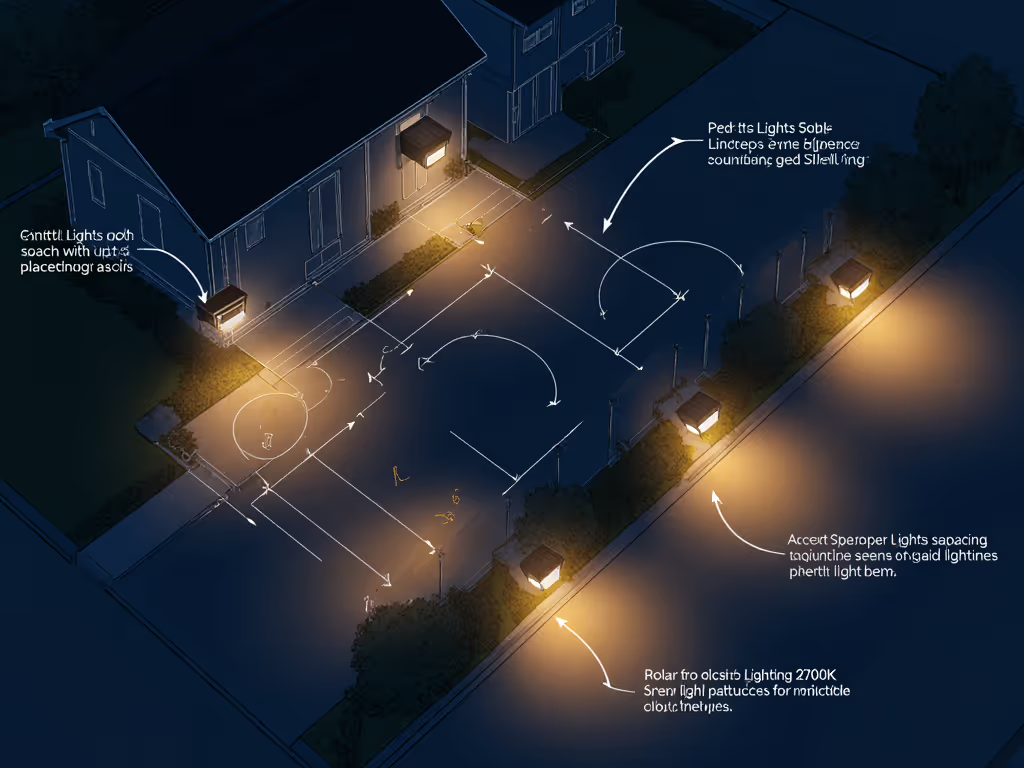
Creating a night garden that serves both people and wildlife requires more than simply placing lights in the ground. It demands strategic thinking about coverage area, spectrum, timing, and fixture placement. By approaching your lighting plan as an integrated system rather than a collection of individual fixtures, you'll create a space that remains beautiful, functional, and ecologically responsible throughout the year.
Further Exploration:
- Review the International Dark-Sky Association's Fixture Seal of Approval program for verified dark-sky friendly fixtures
- Consult your local extension service for native plant-friendly lighting recommendations
- Explore light trespass ordinances in your municipality, many now require dark-sky compliant lighting
- Experiment with temporary placements before permanent installation to assess light patterns
- Document your lighting environment before and after installation to evaluate effectiveness
Remember that thoughtful lighting design creates spaces where humans and wildlife can coexist peacefully after dark. Shield the source, save the stars, and enjoy the quiet beauty of your responsibly illuminated outdoor space.
Related Articles

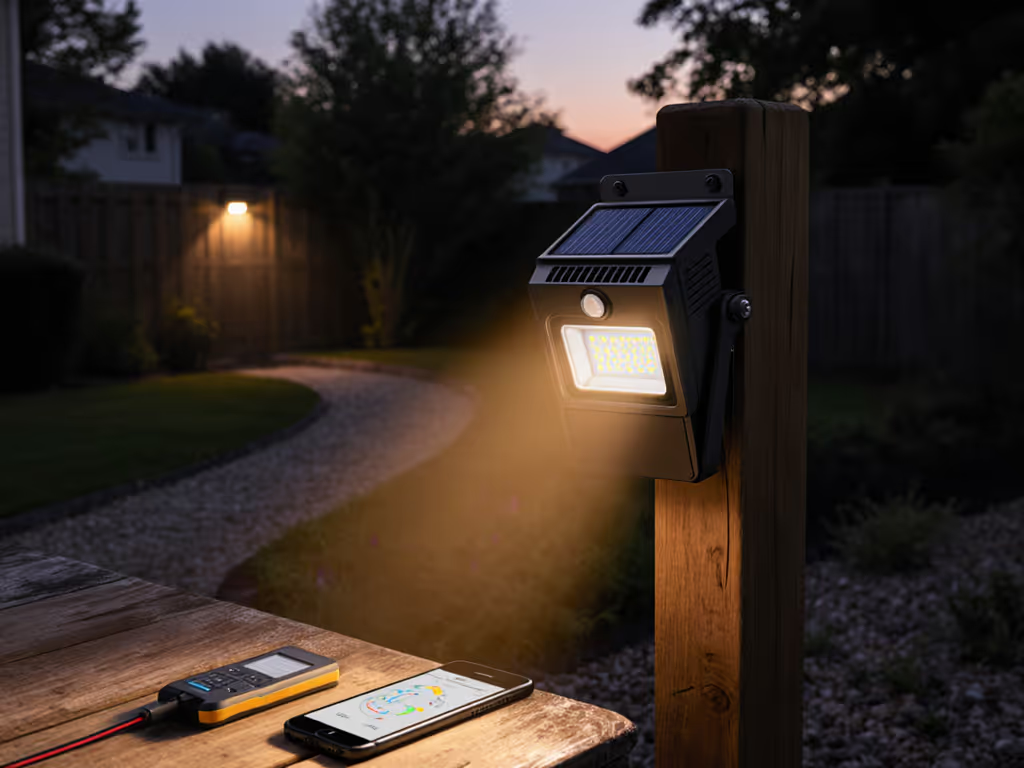
Solar Flood Lights: Real-World Security Performance Tested
Get field-tested guidance on which solar flood lights actually hold up in shade and winter, plus simple ways to verify real brightness and runtime. Prioritize LiFePO4 batteries, remote/amorphous panels, and dark-sky beam control to boost reliability and avoid neighbor glare.
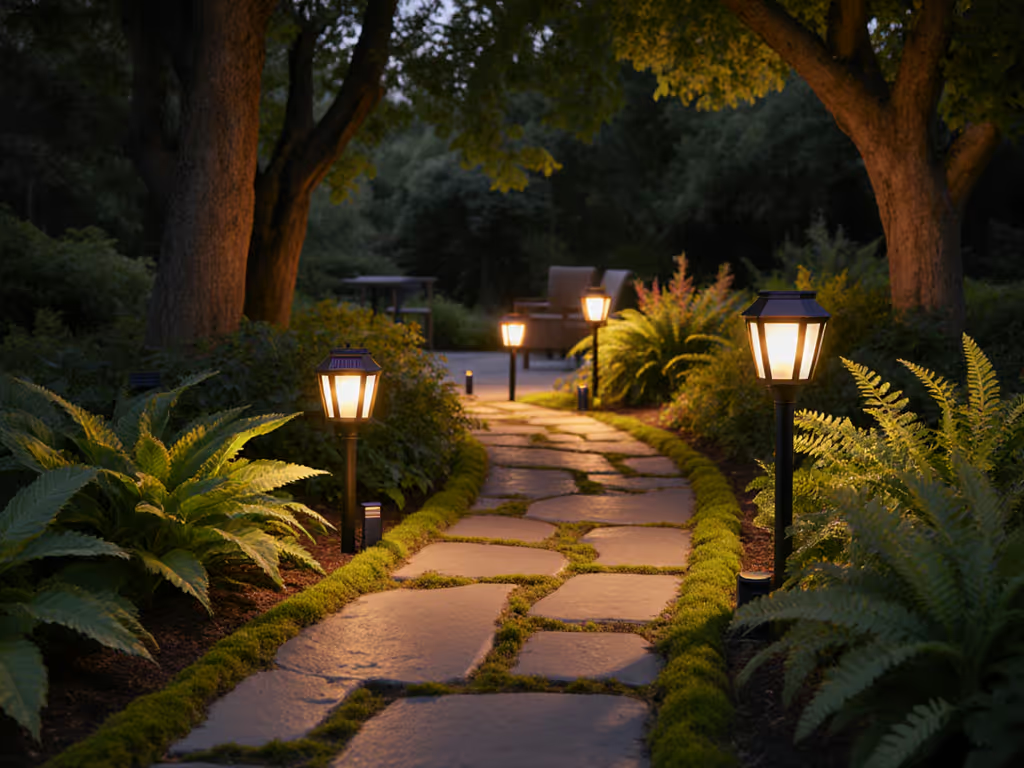
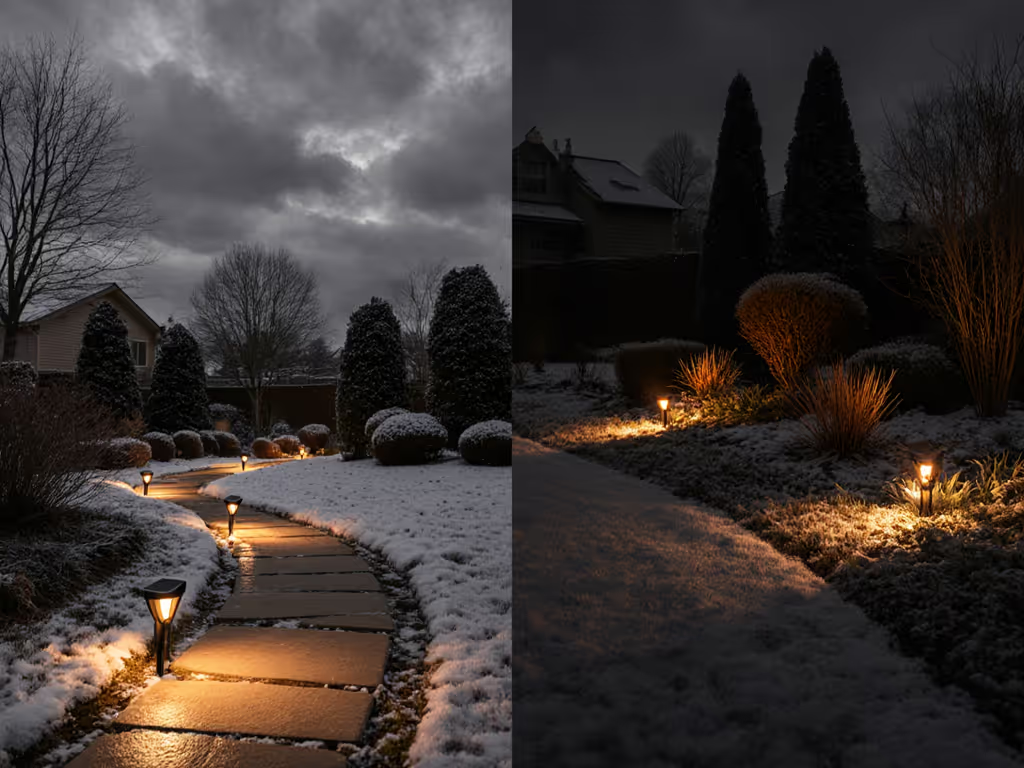
Path Lights vs Spotlights: Solar Cloudy-Day Performance
Field tests show solar path lights deliver roughly 3x more usable light and longer runtime than spotlights in cloudy, cold conditions. Follow the placement rules, battery and beam specs, and Winter Index guidance to choose and position fixtures that stay dependable through winter.
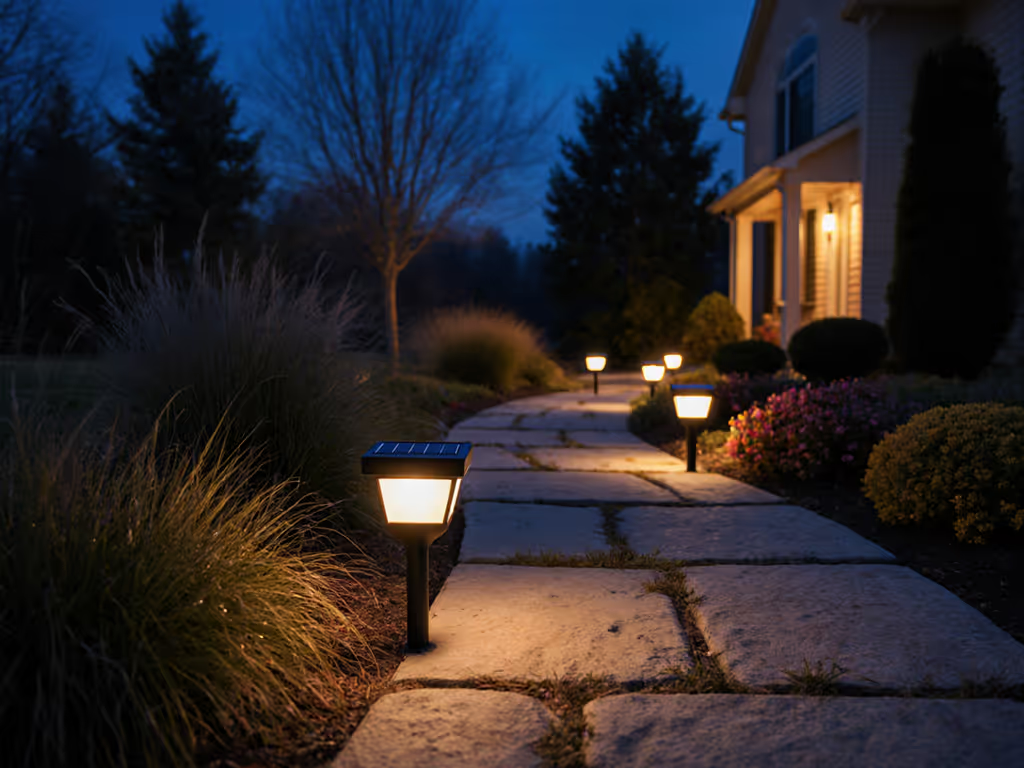
Best Solar Path Lights Tested for Shade & Winter Performance
Learn how to select and position solar path lights that deliver reliable performance in shade and winter while protecting the night sky and wildlife. Get the key metrics, spectrum choices, panel strategies, and installation practices for durable, low‑impact illumination.
